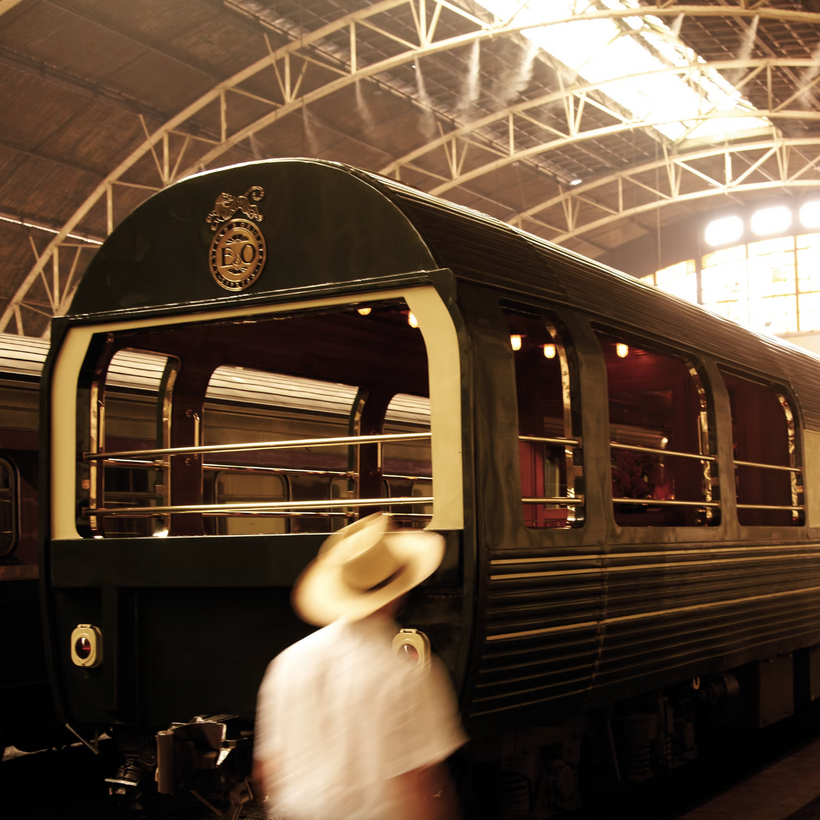The grand opening of a missing rail link between China and Laos has allowed passengers to travel by train all the way from Lisbon to Singapore, via Paris, Moscow, Beijing and Bangkok — a distance of about 11,650 miles, and the longest journey possible since the invention of the railway.
It would take a long time, however. The luxury sleeper train from Paris to Moscow runs only once a week. You would then have to go to a different station in Moscow to take the Trans-Siberian Express through Mongolia to China. It runs twice a week. The high-speed line from Lisbon to Madrid is not yet open and you would have to take several local trains to reach the Spanish capital.
Travelers would have to plan for a three-week journey in all, with several days in hotels waiting for connections.

The new high-speed line from Kunming, in China, to Vientiane, the capital of Laos, stops short of the border with Thailand. To continue south, travelers must get a bus for about 11 miles south to the Thai border, where they can pick up a slow Thai train, stopping at least 30 times on the way to Bangkok.
The final stretch, down the Malaysian peninsula to Singapore, can be done in grand style, however, if booked well in advance: the Eastern and Oriental Express is one of the world’s most luxurious — and expensive — train rides.
The trains will have to change gauge twice — crossing from Iberia’s broad gauge into Hendaye in France, and at Brest, where trains from Poland are lifted up and new wheel sets slotted in to fit on the broader Russian gauge.
The Eastern and Oriental Express is one of the world’s most luxurious — and expensive — train rides.
Mark Smith, the international rail expert who runs the website Seat61, knows the route well, and said most travelers would probably want to start from London rather than Lisbon — although they could begin even further south at Lagos on the Algarve.
He said there was strong demand for long-distance rail travel: “There always has been. Many people take the Trans-Siberian to the Far East, and Australians spending time in Europe often take the line part of the way home instead of flying.”

Smith said the line “really does link the railways of Europe with those of the Far East”.
The missing link in Laos was built by China and opened by President Xi of China and President Thongloun of Laos with great fanfare on December 3.
It is part of China’s Belt and Road project to extend its high-speed transport links and influence deep into southeast Asia and across to Europe. At a cost of almost $6 billion, the 257-mile stretch to the Chinese border took only five years to build, but had to contend with unexploded mines and bombs left from the Vietnam War.
Sleek new trains will serve Vientiane and will make the landlocked country more accessible to the world.
There is another route that could link Europe to Asia without having to spend days on the Trans-Siberian or change gauge. In 2013 Turkey opened the Marmaray tunnel, a concrete tube resting on the floor of the Bosphorus, the narrow but very deep waterway separating Europe and Asia.

Used now only for commuters, the link could take trains across Turkey to Iran, and then on to Pakistan. In theory a train runs from Lahore in Pakistan to Delhi in India twice a week; however since 2019 political tensions have halted the service.
From Delhi it may be possible to travel further east to Myanmar and Thailand, although these routes are either in construction or being planned.
At a cost of almost $6 billion, the 257-mile stretch to the Chinese border took only five years to build.
The route via Turkey still needs passengers to cross Lake Van by ferry. And beyond Quetta in Pakistan, the line becomes “extremely ropey”, Smith said.
For now Europeans going to Asia must change stations in Moscow and set off again from the Yaroslavskiy station for a 4,735 miles odyssey through three countries — six days, with a possible stopover in Ulaanbaatar in Mongolia.
Behind the Story
Long-distance train journeys are wonderful fun (Michael Binyon writes). You stretch out, settle into the rhythm, get out a book with all good intentions and then spend most of the time gazing out of the window at the ever-changing landscape.

On the Rocky Mountaineer, through British Columbia, we saw bears coming close to the line; further south, crossing from Salt Lake City to Denver, we passed through spectacular gorges and tunnels.
In Russia, if you’re on the Trans-Siberian, you’ve got almost a week of unending birch trees, tundra and occasional villages — but your new Russian friends in the compartment will probably be plying you with vodka and endless questions about England. It was the same — with tea instead of alcohol — from Bangalore to Mumbai.
More adventurous were the student trips I made to Greece — three days kipping on the floor, seats and in the luggage racks with other students, with black-clad grandmothers, tough-looking farmers and many of their animals in the corridors.
You see all life on a train — and the longer the journey, the more you’ll learn.
Michael Binyon is a London-based freelance journalist and a former Moscow correspondent for The Times of London

